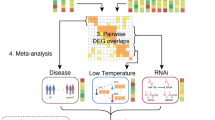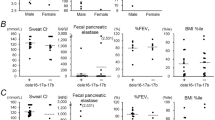Abstract
The most common, life-threatening autosomal recessive disease of Europeans and Euro-Americans, cystic fibrosis (CF), occurs predominately in patients with the F508del mutation.1 Although F508del is currently detectable as a single allele in 1/30-1/40 Europeans2-4 and Euro-Americans,5 it has not been determined what heterozygote selective advantage(s) might account for its relatively high prevalence. Indirect evidence6 suggests that this mutation was present in Brittany at least 3000 years ago, but no direct analyses of ancient DNA have been reported to identify F508del and clarify its frequency in prehistoric inhabitants of Europe. Here we show that F508del was present in 3 of 32 Iron Age inhabitants of Austria from whom DNA could be recovered from molar teeth using procedures that fulfill authenticity criteria.7 Because these individuals, who were buried in cemeteries along the Danube river, were shown by radiocarbon dating of isolated bone collagen to have lived there during 544-255 BC, this indicates that the F508del mutation is definitely more than 2000 years old and that CF (the disease) was present among them. More generally, the apparent enrichment of this Iron Age population in F508del suggests an evolutionary advantage in their environment that can be investigated by interdisciplinary strategies of paleoepidemiology.
Similar content being viewed by others
Article PDF
Author information
Authors and Affiliations
Rights and permissions
About this article
Cite this article
Farrell, P., Le Marechal, C., Ferec, C. et al. Discovery of the Principal Cystic Fibrosis Mutation (F508del) in Ancient DNA from Iron Age Europeans. Nat Prec (2007). https://doi.org/10.1038/npre.2007.1276.1
Received:
Accepted:
Published:
DOI: https://doi.org/10.1038/npre.2007.1276.1



